5 ways AMD's powerful R9 Nano makes tiny gaming PCs exciting
Promises Fury X power in a small chassis
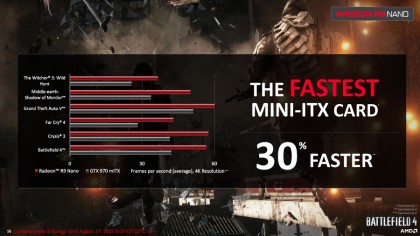
Introduction
AMD reckons the Mini-ITX spec hasn't got enough attention in recent years, with many gamers passing up on smaller boxes due to performance concerns.
To change how you think about mini gaming PCs, the company is launching the Radeon R9 Nano on September 10. A tiny graphics card that's barely bigger than a slice of bread, AMD's third Fiji GPU-based card is looking to make Nvidia's GTX 970 mini toast (...sorry).
AMD claims that the Nano, which packs 4GB of High-Bandwidth Memory (versus the 970's 4GB of VRAM) is 30% faster than the 970 when running certain titles.
It all adds up to an intriguing option if you're looking to to build a small form factor PC that packs the performance of full-sized rigs, but what else makes it tick? Click on to find out what else makes the R9 Nano an exciting card for small form factor fans.
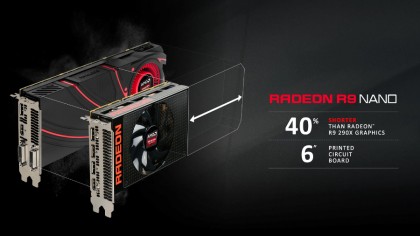
1. It's so, so small
The R9 Nano is 40% shorter than AMD's R9 290X spanning a mere six inches, and it's also more compact than Nvidia's GTX 970 mini which measures 6.7 inches. AMD was able to make space savings by relocating its Fiji architecture from the printed circuit board and placing it on the die close to the GPU core.
AMD confirmed that the R9 Nano is starting out as a reference design but will be opened up to third party card manufacturers at a later stage. Expect cards from the usual gamut of companies to trickle out featuring different input ports and other variations on AMD's design.
The Nano supports HDMI 1.4 out of the box and AMD plans to introduce HDMI 2.0 support through a HDMI dongle that is set to launch towards the end of the year.
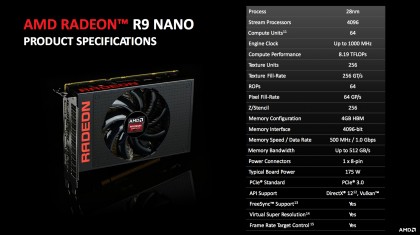
2. Tiny fist, big punch
Based on AMD's Fiji GPU, the R9 Nano is geared for 4K gaming. It features the same 4096 stream processors as the R9 Fury X while operating at a specified TDP of 175W. That's 100 less Watts than AMD's flagship card.
Very much a high-end card squeezed into a much smaller design, the R9 Nano is clocked at around 900MHz in most situations but can reach up to 1000MHz. AMD product manager Victor Camardo confirmed that it can be overclocked further by removing the power limit in AMD's Catalyst Control Centre and raising power while maininting "really good airflow and ventilation".
Its maker claims that the R9 Nano is 30% faster than the Radeon R9 290X while being 30% more energy efficient. It uses the high-bandwidth memory (HBM) interface (which AMD confirmed can't be overclocked) and sports 256 texture mapping units along with 64 raster operating units.
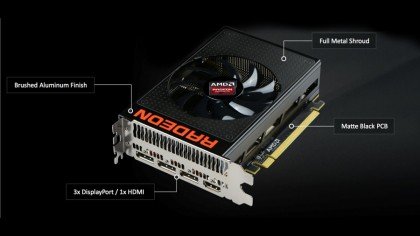
3. It has a LAN-party friendly design
AMD says that it spent a good amount of time focusing on the R9 Nano's design to make it as "LAN-party friendly" (ie. nice to look at) as possible. Built around a metal exoskeleton, it features a matte black finish compared to the glossy materials previously used in AMD's designs.
The company also designed its cooling solution in a specific way, placing the cooling pins in a horizontal direction to avoid hot air being blown onto the motherboard. Instead, heat can escape out of the back of the card rather than being blown back onto the circuitry while maintaining air re-circulation inside the chassis to maintain positive air pressure.
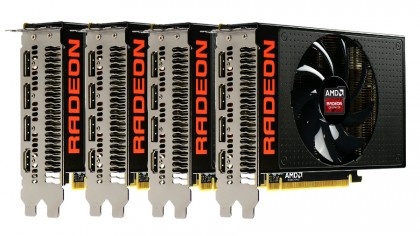
4. You can combine a few of them
Fans of multi-GPU setups rejoice: up to four R9 Nanos can be squeezed into a single chassis and used in CrossFire. AMD reckons this makes the case for some interesting water-cooled rigs while being a good fit for VR gaming (AMD's Liquid VR is supported).
The AMD R9 Nano will be priced at $649 on launch, which roughly translates to £419, so you might need to sell a kidney (or at least work a few extra shifts ) to string together a few R9 Nanos. AMD is set to confirm official UK pricing in the next few days.
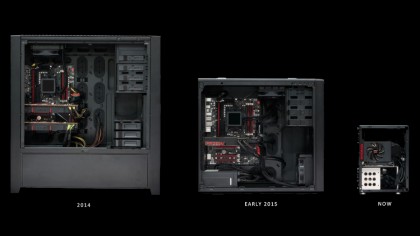
5. It operates at a whisper
You would expect a smaller card to make less noise than a big one, which is thankfully the case. The reductions in temperature, power and size allowed AMD to make the the R9 Nano up to 16 decibels quieter than AMD's 290X reference card. To give you an idea of what that means in the real world, sound energy levels double every three decibels, which equates to quite a saving.
